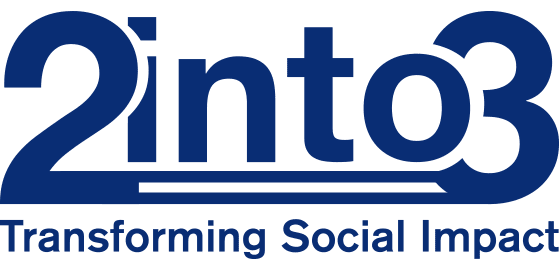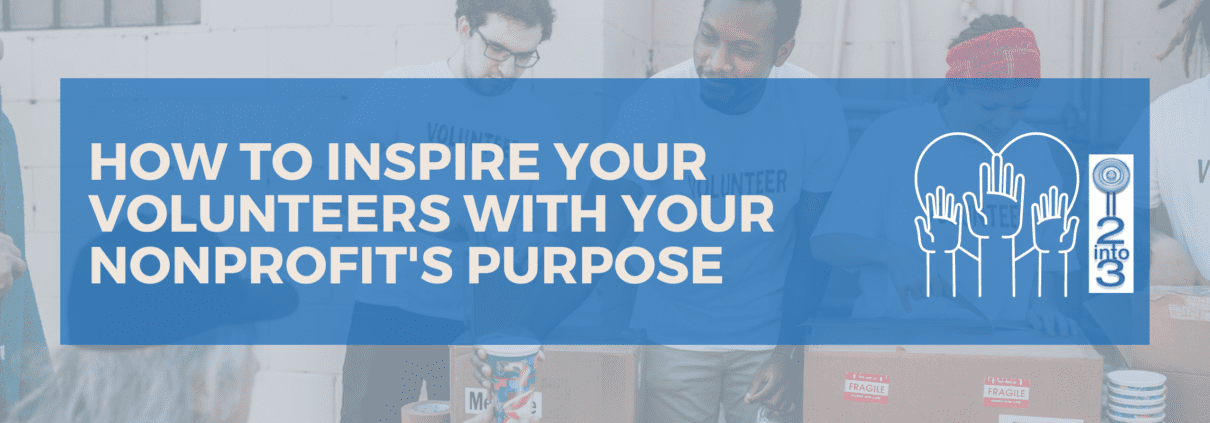How to Inspire your Volunteers with your Nonprofit’s Purpose
On the 1st September, we hosted a breakfast event, “Recruitment & Retention Challenges in Nonprofits: Is it just about pay?” which was a fascinating discussion about how nonprofits can ensure that they attract and keep talent. There’s another interesting element to this discussion, which probably deserves its own event: How to Inspire your Volunteers with your Nonprofit’s Purpose. While interventions in pay and benefits are not relevant to volunteer recruitment and management, its striking how many similarities there are between the demands of today’s paid and unpaid talent.
Volunteering today: still essential, yet evolving
All of Ireland’s 34,000 nonprofits* rely on volunteers to some degree. All will have Governors, Trustees or Directors that give their time on a sustained basis, over several years, to oversee their organisation and to provide strategic direction.
For many other organisations, the contribution of volunteers is essential for delivering specific services, or running games, events, fundraisers, shops and even the organisation itself. Ireland’s nonprofit sector is dominated by small organisations: in 2019, 48% reported having fewer than five staff, and 20% have no staff*. For these, volunteers are the organisation’s talent.
Given the importance of volunteers for effectiveness of the nonprofit sector, its vital that all organisations remain alive to the changes that have occurred over the last decades in volunteer rates and expectations. The implications could be wide ranging and, for some, existential.
1. Purpose and Impact

One of the most significant shifts in volunteering in Ireland is related to motivation. Up until the mid-90s, ‘wanting to help’ was the number one driving factor. However, since the late 1990s, that has been vastly overtaken by ‘belief in cause’*. Research during COVID-19, found that the key benefits, felt by the majority of volunteers, were a sense of purpose, belonging and impact.
This shift from altruistic-led to purpose-led volunteering is significant, as it implies that today’s volunteers need to understand how their efforts contribute to positive change. It also implies that without that regular affirmation, the motivation and commitment of your volunteers may be jeopardised. Interestingly, at yesterday’s event we also heard about the importance of purpose, impact and culture to today’s talent – especially graduates.
Having current and inspiring Mission, Vision and Values statements, and a Strategic Plan to deliver on those, is crucial as they enable all people at all levels of your organisation to understand what change their contribution is helping to deliver. Make those connections explicit in your volunteer recruitment and support practices. Define your volunteer roles in terms of outcomes, not just tasks.
If you need to refresh your Mission statement or your Strategic Plan, involve your staff and volunteers; make them feel like they have a genuine stake in the future of your organisation. And as you make progress through your Plan, communicate and recognise the impact that has been made with their support.
2. Flexibility and Capacity

‘A lack of time’ has always been the main barrier cited by those not involved in volunteering*. More recently, this has evolved into volunteers wanting greater flexibility in how they give their time.
Volunteers increasing want short-term experiences that fit around their lives, as opposed to long-term commitments on a fixed schedule. We’ve even seen the rise of ‘micro-volunteering’ – bite-size, task-based volunteering with minimal commitment and formality – a format most favoured by younger cohorts, and often carried out entirely online*.
While not all volunteering tasks can be adapted to micro-volunteering, nonprofits do need to find ways to respond to the pull towards flexibilization in order to attract and retain volunteers. Take time to strategically review the services and workstreams that rely on volunteer support, and find opportunities to innovate how they are structured without negatively impacting your service users. How can you build in flexibility into your volunteer programmes?
And also consider the organisational implications for how you manage a more complex constellation of volunteer relationships – on your team, your service users, and the structures, training and technology that support them. Changes at this scale can take years and significant investment to implement, but may be essential to future-proof your organisation.
3. Diversity and Inclusion

Volunteering has long been associated with older and wealthier demographics*. In addition to the points above regarding purpose-driven volunteering and greater flexibility, youth-centred approaches to attracting younger volunteers should seek to address potential obstacles faced by some young people, for instance concerns around transport and expenses*.
Moreover, younger people don’t represent the only demographic in which there are higher barriers to volunteer participation. Like your workforce, organisations should aim for their volunteers to reflect the diversity of the communities they serve.
Being more inclusive takes thought and investment – but it’s worth it. Consider how and where you advertise volunteer opportunities. If you are looking to target a specific demography, take time to understand them, what motivates them, and to build relationships. Tailor your volunteer programmes and communications, and consider how to use peer-to-peer or buddy systems to support inclusion*.
If you are looking to diversify your Board room, do not take for granted what additional supports might need to be put in place to ensure meaningful participation. For instance, first-time Trustees and Directors; people with employment, caring or academic responsibilities; or those with special access needs might require training, mentoring, logistical support, or time accommodations. Equally, be mindful that the culture and practices of your Board or wider organisation might need to adapt in order to be actively inclusive. Token representation serves nobody.
Conclusion
The We Act campaign (coordinated by The Wheel) is a brilliant illustration of the power of people in contributing to a better society. Whether paid or unpaid, everyone involved in nonprofits plays an important role. However, the way people work and volunteer their time has changed, and all organisations should be thinking strategically about how to recruit, retain and recognise the impact of all talent – including volunteers.
If you would like to discuss any of topics mentioned in this article, please feel free to contact Luna Atkins, our Head of the Strategy Advisory Practice on (021) 237 9838.
Considering relooking at your Strategic Plan or Mission, Vision & Values? Here is more info on our Strategy Advisory Practice.
Footnotes
1 https://benefactslegacy.ie/wp-content/uploads/2022/03/benefacts-nonprofit-sector-analysis-2021.pdf
2 https://givingireland.ie/wp-content/uploads/2021/11/Giving-Ireland-2021-Report.pdf
3 https://assets.gov.ie/5587/150119115733-35c3c63a13d248ada01a713955efae4e.pdf
4 https://assets.gov.ie/5587/150119115733-35c3c63a13d248ada01a713955efae4e.pdf
5 https://blogs.ncvo.org.uk/2015/09/28/micro-volunteering-might-be-small-but-its-got-big-potential/
6 https://assets.gov.ie/5587/150119115733-35c3c63a13d248ada01a713955efae4e.pdf
8 https://www.volunteer.ie/wp-content/uploads/2022/04/InclusiveVolunteeringFinalFeb2022.pdf


